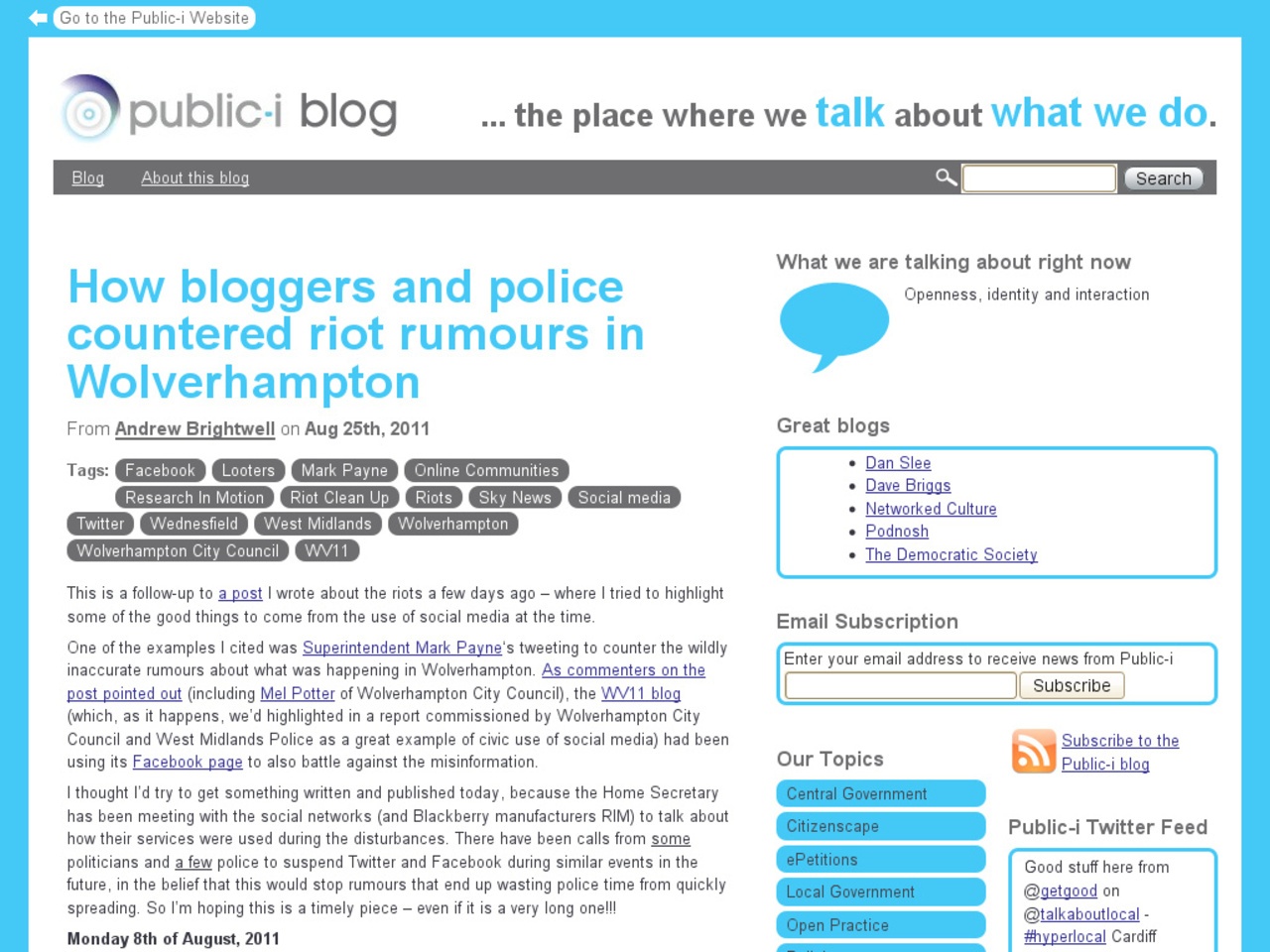How bloggers and police countered riot rumours in Wolverhampton
Visit: http://blog.public-i.info/2011/08/how-bloggers-and-police-countered-riot-rumours-in-wolverhampton/
When the riots struck panic and rumour kicked in. While some called for the internet to be shut down others at the sharp end turned the power of Twitter into a force for good. With the Print media leaden footed, Wolverhampton police officer Supt Mark Payne used Twitter to shoot down rumours posed to him by the wv11 blog, a site run by residents James Clarke and Steph Jennings. As a case study this is brilliant. As an example of how to use digital channels in an emergency this is peerless and essential reading.
Because Mark’s updates were coming from a verifiable, official source they proved helpful to other people in Wolverhampton trying to make sense of what was going on. Steph Jennings of the WV11 blog said: “When we set up WV11 we made a decision that we’d only ever report things if we knew were fact, so getting updates from Mark and other police officers was really valuable.”
Steph and James relayed Mark’s updates regularly to their Facebook page and blog – pouring cold water on myths that there had disturbances at the Bentley Bridge shopping centre in Wednesfield (which, by the way, is WV11). The work they did appears to have had an invaluable effect.
“After a while, people were coming onto the Facebook page and correcting what other people were saying [when they were rumours]. People were saying things like: ‘I think you should just listen to what the guys running the site are saying.’”
Of course, Mark’s tweets weren’t just being followed by the WV11 blog – but by more traditional news sources, too.At one point, Mark says, the content of an update found its way on to Sky News – perhaps more proof if it was needed of the value and timeliness of the information he was providing.
Follow @DigEngGuide for more examples and tips


 Everything
Everything